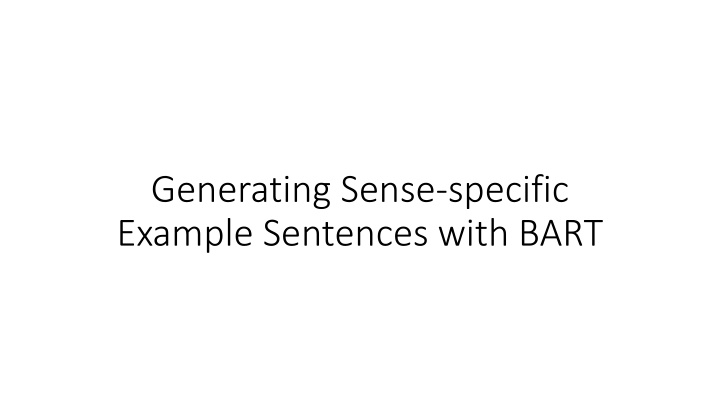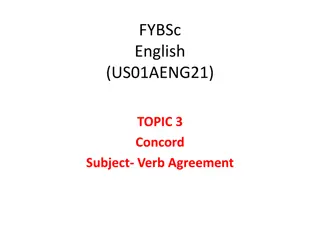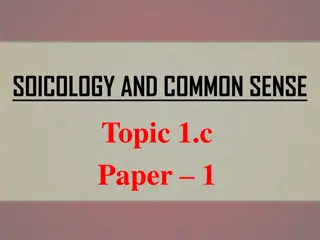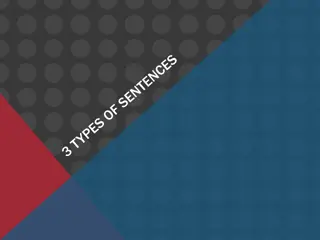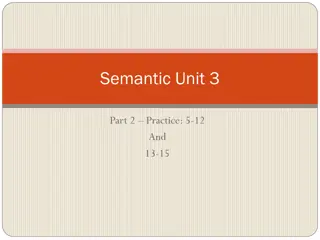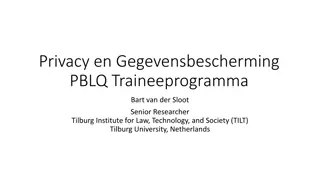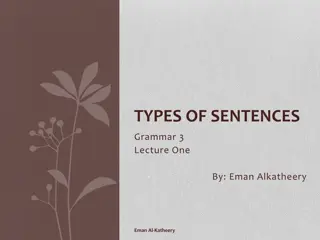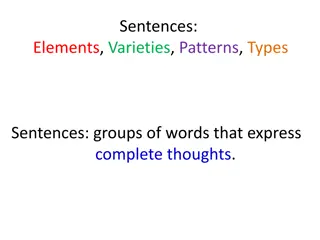Generating Sense-specific Example Sentences with BART Approach
This work focuses on generating sense-specific example sentences using BART (Bidirectional and AutoRegressive Transformers) by conditioning on the target word and its contextual representation from another sentence with the desired sense. The approach involves two components: a contextual word encoder using a pretrained Bi-Encoder Model (BEM) and a conditional text generator in BART. By leveraging BEM and BART, sentences are generated with the target word embodying the desired sense, enhancing language generation tasks.
Download Presentation

Please find below an Image/Link to download the presentation.
The content on the website is provided AS IS for your information and personal use only. It may not be sold, licensed, or shared on other websites without obtaining consent from the author.If you encounter any issues during the download, it is possible that the publisher has removed the file from their server.
You are allowed to download the files provided on this website for personal or commercial use, subject to the condition that they are used lawfully. All files are the property of their respective owners.
The content on the website is provided AS IS for your information and personal use only. It may not be sold, licensed, or shared on other websites without obtaining consent from the author.
E N D
Presentation Transcript
Generating Sense-specific Example Sentences with BART
Goal Generate sentences using BART by encouraging the target word to appear in the sentence with the desired definition (sense). Ex: cool (fashionable and attractive at the time; often skilled or socially adept) - It's not cool to arrive at a party too early Ex: cool, chill, cool down (loose heat) - "The air cooled considerably after the thunderstorm"
Approach Vanilla autoregressive generation models the probability of a sequence ?: ? 1 ? ? = ??(??|?<?) ?=0 In this work, we additionally condition on the target word ? and the contextual representation ? of that word from another sentence where it has the desired sense: ? 1 ? ? = ??(??|?<?,?,?) ?=0
Approach Two components: Contextual word encoder: Use pretrained Bi-Encoder Model (BEM) https://aclanthology.org/2020.acl-main.95.pdf (https://aclanthology.org/2020.acl-main.95.pdf) Conditional text generator: BART given meaning representation ? from BEM and the target word ?, generate a sentence with the target word having the desired sense.
BEM We condition on the output of the context encoder
BART Encoder
Decoder BART Encoder
Self-supervised Decoder Training Randomly choose polysemous target word from training sentence (from any text corpus). Pass sentence through BEM contextual word encoder and take the contextual embedding at the output for the target word. Similarly, pass the target word through the BART encoder. Concatenate the BEM contextual embedding to all timesteps of BART encoder output, then pass to BART decoder. Encourage BART to reconstruct the training sentence via cross-entropy loss. Only update BART parameters (BEM is frozen).
Self-supervised Decoder Training They might win the game. </s> BART Decoder BEM Encoder BART Encoder <s> They might win the game. </s> They might win the game. <s> might </s>
Self-supervised Decoder Training Resolve meaning Context invariant (doesn t encode other words in sentence) They might win the game. </s> BART Decoder BEM Encoder BART Encoder <s> They might win the game. </s> They might win the game. <s> might </s>
Self-supervised Decoder Training Resolve meaning Context invariant (doesn t encode other words in sentence) Indicate target word Static word representation They might win the game. </s> BART Decoder BEM Encoder BART Encoder <s> They might win the game. </s> They might win the game. <s> might </s>
Importance of BEM BERT makes sentence reconstruction trivial BERT encodes surrounding words BEM creates context-invariant representation based on WSD objective cross-entropy is only slightly lower than vanilla autoregressive model during training
Text Generation Pass example sentence with same target sense through BEM encoder to get fixed-length embedding Pass target word through BART encoder Decode using BART: Generate text using top-k decoding. If target word already appears in generated sentence, set first token s logit to for remainder of decoding.
Examples Input: The two decided to get together tomorrow to discuss the terms of the contract. Output: and she wanted me to come with her and sign our contract. so i am going to stay here until we finalize the contract, '' she explained. he would not let them make any money until they had final negotiations of the contract.
Examples Input: "If he stayed here much longer, he thought he might contract a disease." Output: he was in a coma, meaning he might contract an ulcer. he wasn't sure he would contract an illness like that. this means that his lungs wouldn't contract something called the bronchial disease.
Evaluations Word-in-Context Word Sense Disambiguation Human evaluations
Conclusions Self-supervised approach for generating sentences with a target word sense Future applications include data augmentation and construction of dictionaries for low-resourced languages
